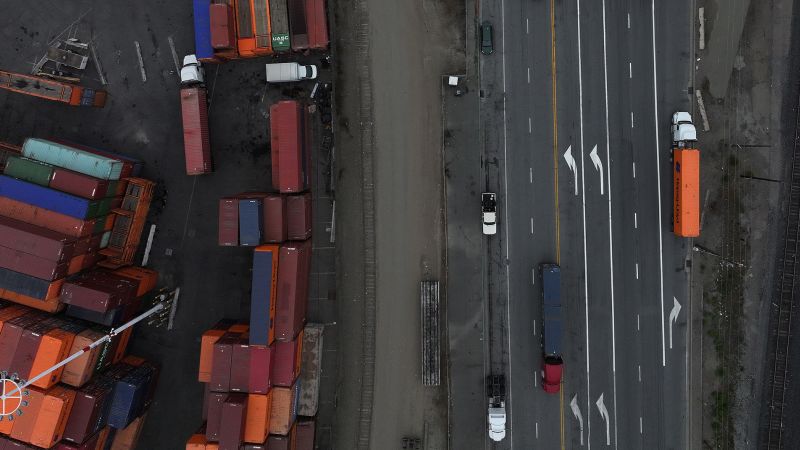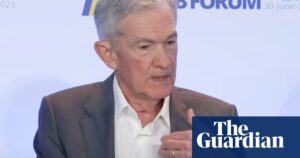
With just over a week remaining in a 90-day pause on President Donald Trump’s “Liberation Day” tariffs, the White House is racing against the clock to finalize trade deals that could stabilize an increasingly uneasy economy. The administration has inked only two trade frameworks, with dozens more needed before the July 9 deadline, casting doubt on the likelihood of meeting this ambitious goal.
For months, the Trump administration has assured that deals are imminent, collaborating with 18 key partners to lower trade barriers while hundreds of other countries await relief from higher tariffs. However, the timeline for these negotiations has been consistently shifting.
Promises and Delays in Trade Negotiations
In a late April interview with Time, Trump claimed, “I’ve made all the deals,” suggesting that trade negotiations with foreign partners were nearly complete. “I’ve made 200 deals,” he asserted. Yet, more than two weeks later, he acknowledged that completing hundreds or even dozens of deals within the short timeframe was unrealistic. During a recent White House press briefing, Trump reiterated this point.
“You know, we have 200 countries,” Trump said. “We can’t do that. So at a certain point, over the next week and a half or so, or maybe before, we’re going to send out a letter. We talked to many of the countries, and we’re just going to tell them what they have to pay to do business in the United States. And it’s going to go very quickly.”
The idea of imposing new tariffs on countries unable or unwilling to reach a deal with the United States has been circulating for over two months. On April 23, Trump stated his administration would “set the tariff” for countries failing to negotiate new terms in the subsequent weeks. By May 16, he indicated that “at a certain point, over the next two to three weeks … we’ll be telling people what they’ll be paying to do business in the United States.”
Active Negotiations and Economic Implications
Meanwhile, the United States remains engaged in active negotiations with its key trading partners. Despite promises of progress, tangible results have been scarce. On June 11, Commerce Secretary Howard Lutnick predicted a surge of deals, telling CNBC, “You’re going to see deal after deal, they’re going to start coming next week and the week after and the week after. We’ve got them in the hopper.”
However, White House press secretary Karoline Leavitt downplayed the urgency of the deadline, and Treasury Secretary Scott Bessent suggested a more relaxed timeline, aiming for completion by Labor Day instead of the July 9 deadline.
In a social media message, Trump announced the United States was withdrawing from trade talks with Canada over its digital services tax, threatening new tariffs within a week. Bessent indicated that around 20 countries might revert to their “Liberation Day” tariff rates starting July 9, while others would have extended negotiation periods. The specific countries facing higher levies remain unnamed, but some tariffs were previously set as high as 50% before the pause.
“The idea that uncertainty will be resolved early this summer appears to be completely dead,” said Justin Wolfers, an economics professor at the University of Michigan. “This means tariff aggression is not dead. That’s probably not super surprising but some of us allowed ourselves moments of optimism.”
Economic Concerns Amidst Trade Uncertainty
The protracted timeline for tariff negotiations is troubling, especially as the economy shows signs of strain. After months of strong economic indicators but weak consumer sentiment, trends appear to be reversing. The University of Michigan reported a 16% rise in consumer sentiment this month, yet consumer spending unexpectedly fell in May, marking the first decline since January.
Inflation is on the rise, job growth is slowing, and retail sales are declining, posing significant concerns as consumer spending accounts for two-thirds of the U.S. economy.
“Households are anxious about what tariff-induced price hikes will do to their spending power, while concerns about the robustness of the jobs market are on the rise,” said James Knightley, chief US economist for ING.
Many economists warn that the low inflation seen in the spring may be a temporary respite before prices increase as companies deplete inventories imported before the tariffs. Friday’s inflation report suggests this shift may already be underway.
“Higher prices from tariffs may be starting to work their way through the economy,” said Robert Ruggirello, chief investment officer at Brave Eagle Wealth Management.
Looking Ahead: The Urgency of Trade Deals
While Trump’s domestic policy agenda, including tax cuts, could offset some tariff-related price increases, the ongoing trade war risks retaliation from key trading partners. Such actions could slow the U.S. economy and potentially lead to a recession.
“Trading partners taking retaliatory action could have a lasting impact on US output and, accordingly, public finances,” said Michel Nies, an economist at Citi.
The urgency of finalizing trade deals is clear: while the U.S. economy remains robust, emerging cracks are evident, with tariffs playing a significant role. Further delays will only increase uncertainty, potentially turning the current positive sentiment into a negative outlook.
This report includes contributions from CNN’s Matt Egan.







